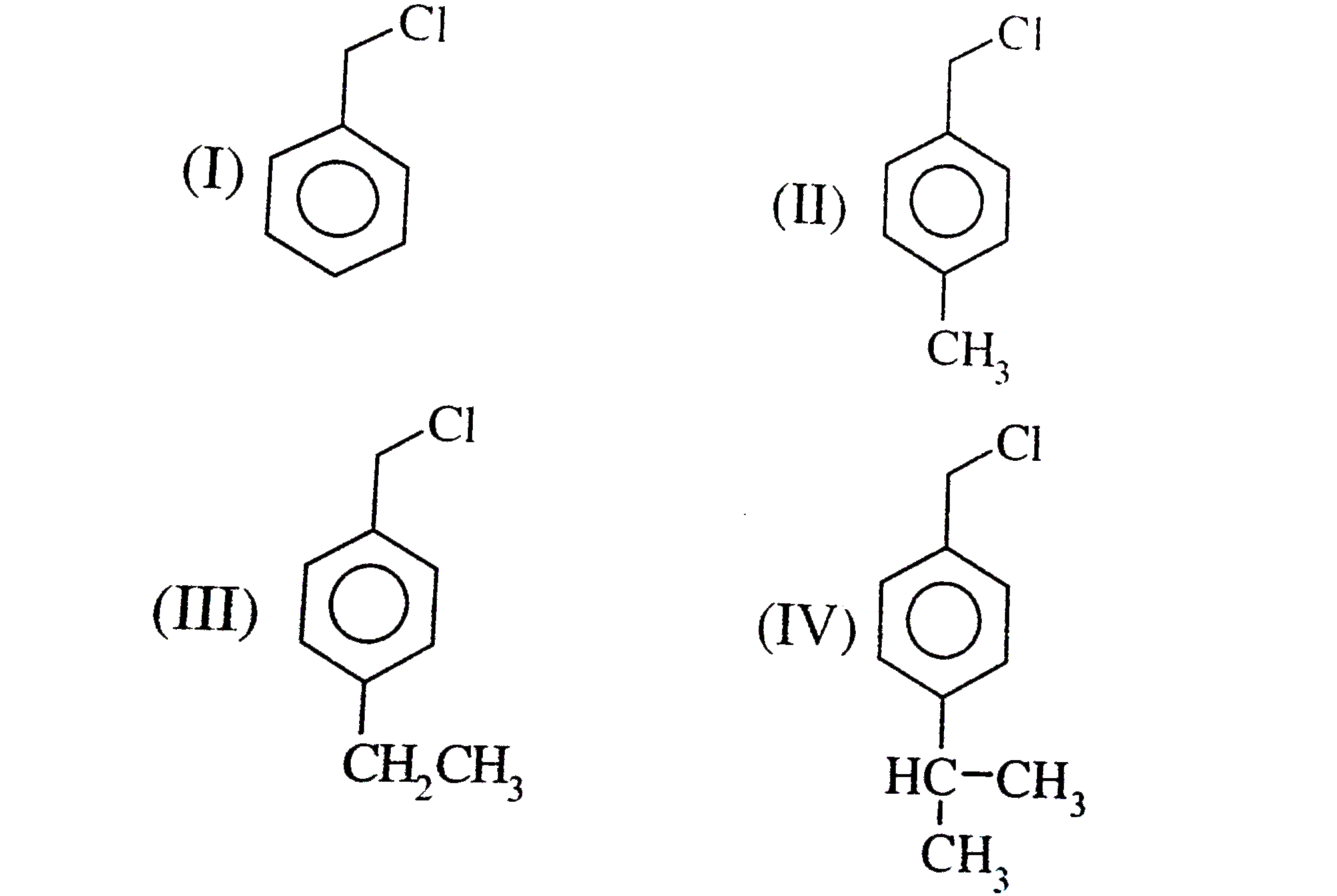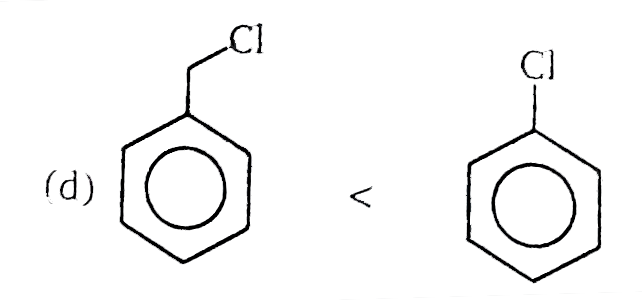Substitution nucloephilic second order [SN2] involves _______ steps(s).
one
two
three
four
The correct Answer is:A
Step by step video, text & image solution for Substitution nucloephilic second order [S_(N)2] involves _______ steps(s). by Chemistry experts to help you in doubts & scoring excellent marks in Class 12 exams.
Topper's Solved these Questions
- BOOK - TARGET PUBLICATIONCHAPTER - HALOGEN DERIVATIVES OF ALKANES AND ARENESEXERCISE - COMPETITIVE THINKING81videos
HALOGEN DERIVATIVES OF ALKANES AND ARENES
- BOOK - TARGET PUBLICATIONCHAPTER - HALOGEN DERIVATIVES OF ALKANES AND ARENESEXERCISE - EVALUATION TEST19videos
HALOGEN DERIVATIVES OF ALKANES AND ARENES
- BOOK - TARGET PUBLICATIONCHAPTER - HALOGEN DERIVATIVES OF ALKANES AND ARENESEXERCISE - EVALUATION TEST19videos
HALOGEN DERIVATIVES OF ALKANES AND ARENES
- BOOK - TARGET PUBLICATIONCHAPTER - GENERAL PRINCIPLES AND PROCESSES OF ISOLATION OF ELEMENTSEXERCISE - Evaluation Thinking15videos
GENERAL PRINCIPLES AND PROCESSES OF ISOLATION OF ELEMENTS
- BOOK - TARGET PUBLICATIONCHAPTER - MODEL QUESTION PAPEREXERCISE - MODEL QUESTION PAPER-II47videos
MODEL QUESTION PAPER
Similar Questions
Nuclephilic substitution reaction is given by those compounds which have nucleophilic groups as leaving groups. The weaker the basicity of a group of the substrate, the better is its leaving ability.
In nucleophilic substitution reactions, the basicity of leaving group should be less than the incoming nucleophilic group. Nucleophilc substitution reaction at sp3 -hybridised carbon is either bimolecular (SN2) or unimolecular (SN1). Bimolecular reaction takes place in single step, involving transition state intermediate. In SN2 reaction is preferred if the compound has less steric hindrance.
Unimolecular (SN2) reaction involves two steps and carbonium ion intermediate. Optically active substrates give recemic mixture in these reactions.
SN2 reaction involves transition state intermediate, hence it is favoured in which of the following solvents?View SolutionAlkylhalides have polar C-X bond and undergo nucleophilic substitution reactions. These give a variety of products with nucleophiles such as −OH,−OR,−NH2,−CN,−NC,−NO2,−ONO,RCOO−, etc. They undergo mainly two types of nucleophilic substitution reactions, SN1 and SN2. SN1 reactions are two steps reactions which proceed through the formation of carbocations while SN2 reactions are one step reaction which proceeds through the formation of transition state. The stability of carbocation and transition state determine the reactivity of alkyl halides.
Arrange the following in the increasing order of reactivity towards SN2 reaction:
 View Solution
View Solution
Knowledge Check
- Question 1 - Select One
Reactivity order for SN1
 AI>II>III>IVBII>III>IV>ICIV>III>II>IDIII>IV>II>I
AI>II>III>IVBII>III>IV>ICIV>III>II>IDIII>IV>II>I - Question 2 - Select One
the correct order of rate of SN1 is:
A B
B C
C D
D
- Question 3 - Select One
Write down nucleophilic substitution (SN2) order for following.
 Ai>ii>iii>ivBiv>iii>ii>iCi>iiiii>ivDiii>i>ii>iv
Ai>ii>iii>ivBiv>iii>ii>iCi>iiiii>ivDiii>i>ii>iv
Alkylhalides have polar C-X bond and undergo nucleophilic substitution reactions. These give a variety of products with nucleophiles such as −OH,−OR,−NH2,−CN,−NC,−NO2,−ONO,RCOO−, etc. They undergo mainly two types of nucleophilic substitution reactions, SN1 and SN2. SN1 reactions are two steps reactions which proceed through the formation of carbocations while SN2 reactions are one step reaction which proceeds through the formation of transition state. The stability of carbocation and transition state determine the reactivity of alkyl halides.
Arrange the following in the increasing order of reactivity towards SN2 reaction:
 View Solution
View SolutionAlkylhalides have polar C-X bond and undergo nucleophilic substitution reactions. These give a variety of products with nucleophiles such as −OH,−OR,−NH2,−CN,−NC,−NO2,−ONO,RCOO−, etc. They undergo mainly two types of nucleophilic substitution reactions, SN1 and SN2. SN1 reactions are two steps reactions which proceed through the formation of carbocations while SN2 reactions are one step reaction which proceeds through the formation of transition state. The stability of carbocation and transition state determine the reactivity of alkyl halides.
Which out of SN1 or SN2 results into inversion of configuration?View SolutionAlkylhalides have polar C-X bond and undergo nucleophilic substitution reactions. These give a variety of products with nucleophiles such as −OH,−OR,−NH2,−CN,−NC,−NO2,−ONO,RCOO−, etc. They undergo mainly two types of nucleophilic substitution reactions, SN1 and SN2. SN1 reactions are two steps reactions which proceed through the formation of carbocations while SN2 reactions are one step reaction which proceeds through the formation of transition state. The stability of carbocation and transition state determine the reactivity of alkyl halides.
Which out of SN1 or SN2 results into inversion of configuration?View SolutionNuclephilic substitution reaction is given by those compounds which have nucleophilic groups as leaving groups. The weaker the basicity of a group of the substrate, the better is its leaving ability.
In nucleophilic substitution reactions, the basicity of leaving group should be less than the incoming nucleophilic group. Nucleophilc substitution reaction at sp3 -hybridised carbon is either bimolecular (SN2) or unimolecular (SN1). Bimolecular reaction takes place in single step, involving transition state intermediate. In SN2 reaction is preferred if the compound has less steric hindrance.
Unimolecular (SN2) reaction involves two steps and carbonium ion intermediate. Optically active substrates give recemic mixture in these reactions.
Which compound will give Walden inversion in SN2 reaction?View SolutionNuclephilic substitution reaction is given by those compounds which have nucleophilic groups as leaving groups. The weaker the basicity of a group of the substrate, the better is its leaving ability.
In nucleophilic substitution reactions, the basicity of leaving group should be less than the incoming nucleophilic group. Nucleophilc substitution reaction at sp3 -hybridised carbon is either bimolecular (SN2) or unimolecular (SN1). Bimolecular reaction takes place in single step, involving transition state intermediate. In SN2 reaction is preferred if the compound has less steric hindrance.
Unimolecular (SN2) reaction involves two steps and carbonium ion intermediate. Optically active substrates give recemic mixture in these reactions.
Which among the following will give SN1 reaction?
 View Solution
View Solution

